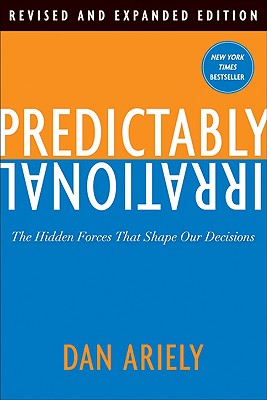The Behavioral Economics of Penguin Classics and A Long Tail Discussion
July 21, 2008
The Penguin Blog has an excellent post on behavioral economics and why people buy more Penguin Classics than other publishers. Sales Managaer Fiona Buckland has obviously been following business literature, as she references not only the classic Why We Buy, but also recenty released Predictable Irrational and Nudge--the latter of which they've recently acquired the paperback rights to and will be releasing in January. (In her post, Buckland also links to a great review of Predictably Irrational from The Guardian) Seth Godin had a very interesting post on the profitability of The Long Tail on Friday.
 The Penguin Blog has an excellent post on behavioral economics and why people buy more Penguin Classics than other publishers. Sales Managaer Fiona Buckland has obviously been following business literature, as she references not only the classic Why We Buy, but also recenty released Predictable Irrational and Nudge--the latter of which they've recently acquired the paperback rights to and will be releasing in January. (In her post, Buckland also links to a great review of Predictably Irrational from The Guardian)
Seth Godin had a very interesting post on the profitability of The Long Tail on Friday. Here's how he illustrated it :
The Penguin Blog has an excellent post on behavioral economics and why people buy more Penguin Classics than other publishers. Sales Managaer Fiona Buckland has obviously been following business literature, as she references not only the classic Why We Buy, but also recenty released Predictable Irrational and Nudge--the latter of which they've recently acquired the paperback rights to and will be releasing in January. (In her post, Buckland also links to a great review of Predictably Irrational from The Guardian)
Seth Godin had a very interesting post on the profitability of The Long Tail on Friday. Here's how he illustrated it :

It's tempting to go for the bestseller list, to create a mass market hit. This is the box labeled 1 on the tail above. Everyone wants to be here. It's where ego meets profit. A home run. Pixar lives in box 1.Incidentally, it turns out the odds of making the bestseller list (at least The New York Times') aren't so good.
The second pocket is labeled, conveniently, #2 (not because it's second best, merely because it's the second one I'm mentioning). This is the profitable, successful niche product. Roger Corman's horror movies, say, or Vandersteen's $3,000 stereo speakers. Not a product for everyone, certainly, but among those that care and are choosing to pay attention, a fantastic choice. The third pocket is to own the long tail, to make a small royalty on a huge range of products. That's CDbaby and iTunes and the Garrett Wade tool catalog.If you're interested in the issue, I'd suggest you read the entire post, as it's much more nuanced and discusses The Dip of The Long Tail. Kevin Kelly wrote an insightful follow up post on the issue, in which he writes:
There's a blatant switcheroo that Seth (and almost everyone else) makes when explaining the Long Tail. In pocket #1 [and # 2]of the curve, Seth talks in terms of a creator of a work. But then when he gets to the long tail, he switches away from a creator, to talk in terms of an aggregator of other creators' work. Why is that? What happens to the creator? The creator is dropped when we get to the long tail "pocket of profit" because the long tail is not profitable for the creator. It's profitable only for the audience and aggregators. [...] ... As one crosses the sections -- going from the short head to the long tail -- one should be consistent and view it from the aggregator's point of view or the creator's point of view. I think it is a mistake to conflate the two view points.That is a very good distinction to make, and if you're an author (or creator of any other material) it's important to make it. But, to be fair, Seth's focus is not on that distinction, and although it's from a slightly different perspective, I think he ends up making essentially the same argument that Kelly makes. Seth writes that:
The most common misconception about Long Tail thinking is that if you don't succeed at pocket 1, don't worry, because the tail will take care of your product and you'll just end up in #2. That's not true. #2 isn't a consolation prize for mass market losers. Mass market losers are still losers.If you're looking for the creator's view, Kevin Kelly is definitely right when he states that "The longer the tail, the worse for sales." And, Seth is right when looking at it from a company perspective, stressing the need to be the best at what you do in your category or market (Pixar, Vandersteen's and iTunes), whether what you distribute is your creation or not. Looking at it from the publishing industry perspective, you obviously want those big hits on the bestseller lists, but you also want to have imprints in niche areas with a die-hard fan base that buys plenty of books, but probably not enough to make even a dent on the lists. And, it probably doesn't hurt to have those long tail distributors there to help sell titles here and there that, for whatever reason, fail to gain traction with a wider audience.


